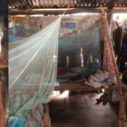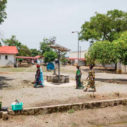
Search
Articles

The Use of the Multidimensional Poverty Measure in Oaxaca
Oaxaca is a Mexican state that is rich in both natural resources and cultural heritage. It is the cradle of the Zapotec and Mixtec cultures, which are emblematic of the Pre-Hispanic period. At 93,757 km2, it is the fifth largest state in Mexico and has 3.8 million inhabitants, with an average age of 24 years – two years younger than the national average. It is a young population that represents a great advantage for the state’s social and economic development. Sixty per cent of the population is indigenous, and 33% speak an indigenous language.

Measuring Poverty in Businesses
In Costa Rica, approximately 87% (1) of jobs are in the private sector. It is a dynamic sector that is constantly growing. However, what are the living conditions of these workers? Does having a job and an income ensure that they have a good quality of life? Could there be multidimensionally poor workers in the private sector? The association Horizonte Positivo, with the support of the Oxford Poverty and Human Development Initiative (OPHI), developed the Business Multidimensional Poverty Index (bMPI) to answer these questions.

A Day in the Life: Living in multidimensional poverty in Nepal, Tamang’s story
Tamang*, a 56-year-old landless woman from an indigenous minority caste, lives near a remote jungle in Nepal with her husband, who has severe disabilities and a low body mass index (less than 18.5), and two granddaughters, who are attending school, the older of whom just started 7th grade.

Sierra Leone Launches a National MPI
In May 2019, Sierra Leone became one of the first countries in Africa to publish a national Multi- dimensional Poverty Index (MPI-SL). The MPI-SL comprises five dimensions and 14 indicators and identifies a person as being multidimensionally poor if they experience more than 40% of the deprivations included in the measure.

Multidimensional Poverty in the United States
This year the U.S. Census Bureau published a report with an innovative multidimensional poverty measurement exercise called the Multidimensional Deprivation Index (MDI), which is in- tended to complement, without replacing, the official income-based poverty measures.












